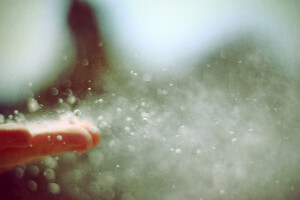The Nature of the Beast
September 9, 2015
This article is the second installment of our blog series, “Scientist Spotlight: The Scientists Behind our Consumer Products Petition.”
I love tigers. But I wouldn’t allow a hungry tiger into my house, would you? Of course not. You know that wouldn’t end well. Inevitably, that tiger would gobble you up. It’s what hungry tigers do. It’s the nature of the beast.
Yet we allow harmful chemicals into our homes even though they will, inevitably, end up in our bodies—it’s what these chemicals do. Dr. Miriam Diamond explains more about this in her statement of support for our petition calling on the Consumer Product Safety Commission (CPSC) to protect consumers by banning four categories of household products if they contain organohalogen flame retardants.

Miriam Diamond is a professor of Earth Sciences at the University of Toronto, and holds a PhD. in Chemical Engineering and Applied Chemistry. At her lab, researchers study environmental chemicals, particularly semi-volatile organic compounds, or SVOCs. They ask:
• What are the sources of these chemicals?
• What are their pathways?
• How are humans and ecosystems exposed?

True Detectives
Like a team of detectives these researchers measure, analyze, and track the movements of polybrominated diphenyl ethers (PBDEs) and other halogenated flame retardants. Rather than dusting for fingerprints they dust for, well, dust. By wiping the surfaces of electronics casings, sampling dust and air (indoors and out), they determine what chemicals are in our environment, where they come from, how they move about, and how much we are exposed to. Among the mysteries they’ve unraveled—for years people wondered about the major route of human exposure to PBDEs—was it food, water, soil, air? In 2005, these sleuths of science determined that house dust was a major culprit. And that’s only the beginning of what they’ve discovered about flame retardants in our homes.

Organohalogen Flame Retardants are SVOCs
Like certain pesticides and plasticizers, organohalogen flame retardants are semi-volatile organic compounds (SVOCs). SVOCs are carbon-containing chemicals that have particular boiling points and vapor pressures – but let’s leave that to the chemists. For our purposes let’s focus on three “critical physical-chemical properties” of the chemical class of flame retardants:
• They are SVOCs, and will tend to migrate into the air when are added to, but not bound to, products.
• Even when they are bound to products, some SVOCs migrate into the surrounding environment.
• They are persistent in the indoor environment, i.e., they break down super slowly indoors after they migrate from products.
We are exposed when we touch the products; and once the chemicals migrate out and accumulate on dust, we’re exposed when we eat and breathe in the dust itself (yes, we all eat bits of dust!). Basically, product-to-hand and hand-to-mouth contact is unavoidable.
In summary, Dr. Diamond says:
The inevitability of this human exposure, combined with the evidence showing that these compounds have toxicity, leads to the conclusion that all organohalogen flame retardants present in consumer products in additive form pose significant risks to human health.
She urges the CSPC to ban the use of additive organohalogen flame retardants in the categories covered in the petition: furniture, mattresses, electronics casings, and children’s products. The CPSC has now made the petition available for a 60-day public comment period. Dr. Diamond and other scientists continue to support the petition during the CPSC’s review process since they know that allowing these chemicals into our homes puts us at risk for exposure and harm—it’s their nature, and a tiger doesn’t change its stripes.